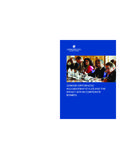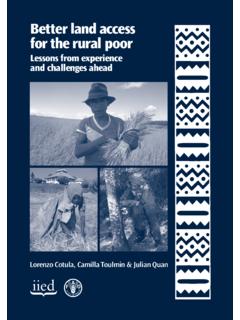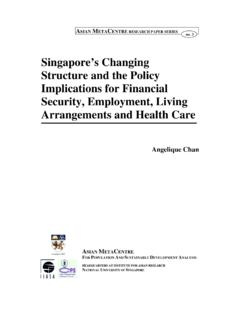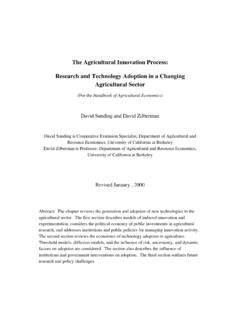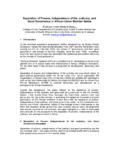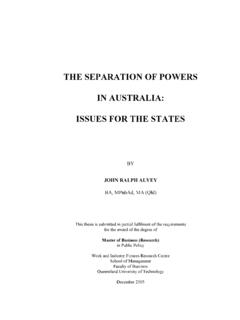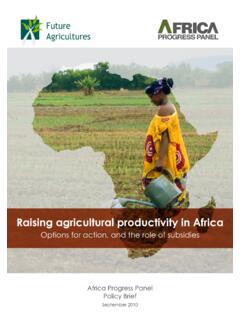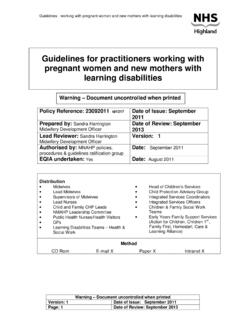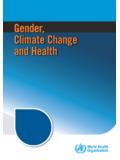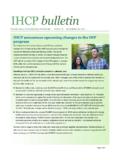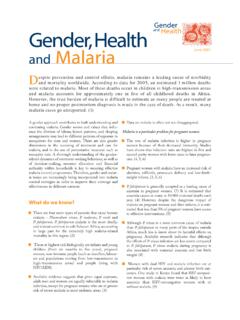Transcription of SHS Papers in Women’s Studies/ Gender Research
1 SHS Papers in women s Studies/ Gender Research No. 2 THE feminization OF poverty AND women S HUMAN RIGHTS Valentine M. Moghadam SHS/HRS/GED July 2005 Gender Equality and Development Section Division of Human Rights Social and Human Sciences Sector UNESCO 1 rue Miollis 75732 Paris cedex 15, France THE feminization OF poverty AND women S HUMAN RIGHTS Valentine M. Moghadam Chief, SHS/HRS/GED Abstract An examination of the feminization of poverty around the world is approached in terms of the three contributing factors that have been underscored in the women -in-development and Gender -and-development (WID/GAD) literature: (1) the growth of female-headed households, (2) intra-household inequalities and bias against women and girls, and (3) neoliberal economic policies, including structural adjustments and the post-socialist market transitions.
2 The growing visibility of women s poverty , it is argued, is rooted in demographic trends, cultural patterns, and political economy. The paper finds cross-regional variation in the economic status of female-headed households, based partly on the social policy or political regime, and partly on women s access to employment and property. Intra-household inequalities are found to exacerbate the vulnerability of women and girls; the problem may be most severe in parts of South Asia, and may also vary by social class. The paper confirms that the poverty -inducing nature of neoliberal restructuring has been especially severe on women . Although the claim that the majority of the world s poor are women cannot be substantiated, the disadvantaged position of women is incontestable.
3 If poverty is to be seen as a denial of human rights, it should be recognized that the women among the poor suffer doubly from the denial of their human rights first on account of Gender inequality, second on account of poverty . Therefore, programs to eliminate or alleviate poverty require attention to Gender inequality and women s human 1 This paper is based on a larger study commissioned in 1996 by the Human Development Report Office of the United Nations Development Programme, for the Human Development Report 1997, which focused on poverty . A version was subsequently published as Occasional Paper 2 by the women s Studies Program at Illinois State University (1997), and the Brown Journal of World Affairs, vol.
4 5, no. 1 (1998): 225-48. This version (October 2004) contains some updates to the earlier material, but the framework and argument remain the same. 1 THE feminization OF poverty AND women S HUMAN RIGHTS Introduction Since the 1980s, studies on the proliferation of female-headed households and Research into the social impacts and Gender -specific effects of structural adjustment policies have led to increased attention to what has become known as the feminization of poverty . The perception is growing around the globe that poverty is becoming increasingly feminized, that is, that an increasing proportion of the world s poor are female. A 1992 UN report found that the number of rural women living in poverty in the developing countries has increased by almost 50% over the past 20 years to an awesome 565 million -- 374 million of them in Asia, and 129 million in Sub-Saharan Africa.
5 While poverty among rural men has increased over the last 20 years by 30%, among women it has increased by 48% (Power, 1993, p. 5). The feminization of poverty was a key concern of the women s caucus of the World Summit on Social According to the Platform for Action adopted at the Fourth World Conference on women in Beijing in September 1995, More than one billion people in the world today, the great majority of whom are women , live in unacceptable conditions of poverty , mostly in the developing countries (United Nations, 1996, p. 37). Buvinic (1997) has written: women now account for a growing percentage of the world s poor. And a publication of the United Nations Development Programme states: 70% of the world s poor are women (UNDP, 1995, p.)
6 4). Is poverty taking on a female face? In the early 1990s, one researcher noted that international comparisons of female poverty and the feminization of poverty are still rare, and the existing data are not usually comparable. No thorough analysis of the subject exists (Allen, 1992, p. 108). The prodigious scholarship emanating from the Luxembourg Income Study shed light on the industrial countries and, more recently, on Central Europe, but data sets for the developing world are limited. By 1996, the World 2 Bank had prepared poverty assessments, based on living standards measurement surveys, for 76 countries, but most of the assessments, like the data from which they are derived, were not The more recent poverty Reduction Strategy Papers (PRSP) have been criticized for insufficient sex-disaggregated data and for not engaging women s groups in the consultative process.
7 The subject itself is vast, as the poverty status of women is manifested at the household, sectoral, occupational, and locational levels. The global feminization of poverty may have many causes or correlates, including wars and civil conflicts. This paper limits itself to an assessment of the extent to which poverty has become feminized and the factors behind women s poverty through a focus on three dimensions of the feminization of poverty that are underscored in the women -in-development or Gender -and-development (WID/GAD) literature. These are: (a) the expansion of female-headed households, (b) the persistence and consequences of intra-household inequalities and bias against women and girls, and (c) the implementation of neoliberal economic policies around the world. I begin the paper by briefly considering feminist perspectives on women s poverty .
8 The bulk of the paper consists of an examination of the three factors that have been linked to women s poverty . In the concluding section, I draw attention to the salience of class and Gender inequalities and of state policies in understanding the feminization of poverty . Sources of data are the WID/GAD literature, publications of the Luxembourg Income Study, poverty assessments prepared by the World Bank, national reports prepared for the 1995 Fourth World Conference on women , and the UNDP. 2 The World Summit on Social Development (also known as the Social Summit) was one of the United Nations conferences of the 1990s.
9 It convened at Copenhagen in March 1995 around three themes: ending poverty , promoting productive employment, and supporting social integration. 3 In May 1996 I was given access to the World Bank s poverty assessments, and read most of them. The assessments cover 28 African countries, 6 South Asian countries, 8 East Asian countries, 5 countries of the Middle East and North Africa, 20 countries of Latin America and the Caribbean, and 8 countries of Central/Eastern Europe and the former Soviet Union. 3 Feminist and WID/GAD Perspectives on women s poverty The typical definitions and measurements of women s poverty in the literature may be based on the conventional measures of household income and consumption, or on qualitative and quantitative measures of entitlements and capabilities.
10 The latter are captured by social indicators such as literacy, life expectancy, primary and secondary school enrollments, access to health care, maternal mortality rates, access to land or employment, wage differentials, time-use, average age at first marriage (or % teenaged girls ever married or pregnant), fertility rates, the sex ratio, and the extent of prostitution. These social indicators, along with the more conventional definitions and measures of household income and consumption, capture what the UNDP terms human development or human poverty . Human development is defined as the process of enlarging people s choices and opportunities through long life, health, and education. Human poverty is defined as more than income poverty it is the denial of choices and opportunities for living a tolerable life (UNDP 1997, p.)
